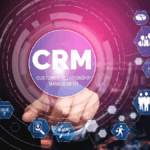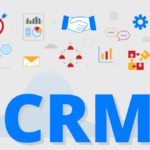Customer Relationship Management (CRM) systems are essential tools for managing customer interactions, boosting sales, and streamlining operations. But while CRMs can transform business processes, poor implementation often leads to frustration, wasted resources, and low user adoption.
To ensure a successful rollout, businesses must avoid common pitfalls. Here are 7 CRM implementation mistakes and how to avoid them:
Lack of Clear Objectives
Mistake: Jumping into CRM adoption without clearly defined goals. Many businesses implement CRMs without knowing what they want to achieve—whether it’s improving customer service, increasing sales, or tracking leads more effectively.
Solution:
- Set measurable goals (e.g., increase lead conversion by 25%).
- Identify key performance indicators (KPIs) before implementation.
- Align CRM features with business objectives.
Clarity in purpose guides the entire process and ensures the CRM delivers real value.
Poor User Adoption
Mistake: Employees resist using the CRM because they don’t see the benefit or find it too complex. A system that isn’t embraced by the team won’t deliver results.
Solution:
- Involve users early in the decision-making process.
- Provide hands-on training and support.
- Choose a CRM with a user-friendly interface.
Focusing on the user experience ensures better engagement and long-term success.
Choosing the Wrong CRM
Mistake: Selecting a CRM that doesn’t fit your company’s size, industry, or workflows. A CRM that works for a large corporation may overwhelm a startup, and vice versa.
Solution:
- Research CRMs specific to your industry (e.g., real estate, finance, healthcare).
- Prioritize scalability and integration capabilities.
- Test drive multiple platforms with demos or free trials.
Make sure your CRM matches your business’s current and future needs.
Inadequate Data Migration Planning
Mistake: Rushed or incomplete data migration leads to missing, duplicated, or inaccurate customer records in the new system.
Solution:
- Clean and standardize existing data before migration.
- Map old data fields to new CRM structures.
- Test the migration with a sample dataset before full deployment.
A clean database ensures your CRM starts on the right foot.
Over-Customization
Mistake: Customizing the CRM too heavily from the start can make it difficult to manage, update, and scale. It may also increase dependency on IT or third-party developers.
Solution:
- Start with out-of-the-box features and workflows.
- Customize gradually based on actual user feedback and evolving needs.
- Use CRM extensions or apps instead of hardcoding everything.
Simplicity at launch leads to better usability and easier maintenance.
Ignoring Integration Needs
Mistake: Implementing a CRM that doesn’t integrate well with existing tools (like email platforms, marketing software, or accounting systems).
Solution:
- List all tools the CRM must integrate with (e.g., Gmail, Slack, Mailchimp).
- Choose a CRM with strong API support or native integrations.
- Test key integrations before full deployment.
Integration is crucial for real-time data flow and avoiding information silos.
Lack of Ongoing Support and Evaluation
Mistake: Treating CRM implementation as a one-time project instead of a continuous process. Without ongoing monitoring, the CRM can become outdated or misaligned with business goals.
Solution:
- Assign a CRM champion or admin to manage updates and improvements.
- Schedule regular reviews to assess performance and user feedback.
- Continuously train new team members and offer refresher sessions.
CRM success depends on continual optimization and alignment with business growth.
Conclusion
A CRM system has the potential to transform your business—but only if it’s implemented thoughtfully. Avoiding these seven common mistakes ensures a smoother rollout, higher user adoption, and better ROI. By planning strategically, involving your team, and choosing the right tools, your CRM can become a powerful asset—not just another unused platform.











